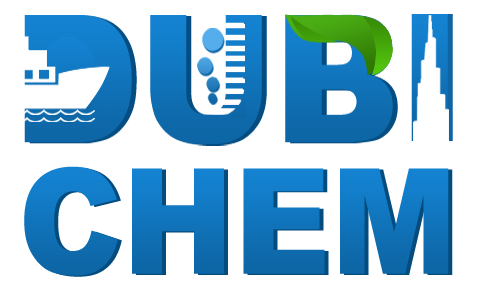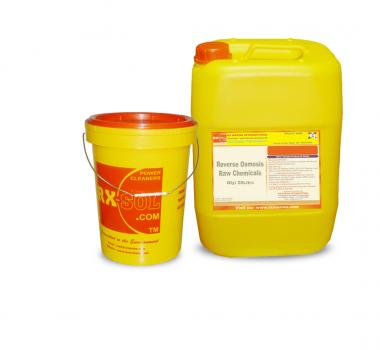Sodium DodecylbenzeneSulfonate ( C18H29NaO3S)
Ethylenediamine Tetracetic Acid Disodium Salt ( C10H14N2Na2O8.2H20 )
Sodium Hydroxide ( NaOH )
Citric Acid MonoHydrate ( C6H8O7.H2O )
Amonia Solution ( NH3 )
Sodium Hydrogen Sulfite ( NaHSO3 ) ,
Types of fouling
There are several types of fouling that are classified in three main categories: inorganic, organic and biofouling. The latter is mainly organic and presents some peculiarities that will be explained forward (that will be further developed).
Inorganic
Silica
Silica deposits are very hard, fragile and looks like/seem to porcelain. Precipitation of silicates is always related to the presence of iron or aluminum, forming silico-aluminates of calcium and iron. The cleaning of siliceous precipitates should be done in alkaline pH values and under temperatures as high as possible with detergent products.
Aluminum
The aluminum found in membranes might have three origins: ionic, colloidal (aluminum silicates) and an excess of coagulants (alumina sulfate and aluminum polychloride). As these coagulants are very difficult to clean, frequently high pH and temperatures are used in order to enhance the detergents’ action.
Iron
The iron from pipes’ corrosion, etc. is not problematic. However, there might be some problems with the iron in solution, which is deposited in membranes as ferric oxide, as well as the iron from coagulants, usually chloride and ferric sulfates as they originate a dark brown colored deposit. To eliminate this kind of deposits, they should be dissolved with acid solutions at high temperatures if possible. Citric acid works very well, and if it is combined with surfactants agents it works even better. If the cleaning is done with pH around 4,1 the removal of iron is optimized, due to the fact that
the mentioned pH corresponds to maximum iron solubility.
Calcium Carbonate, CaCO3
Calcium Carbonate precipitates quickly, forming granulated and porous precipitates. Initially the treatment is simple, since any kind of strong acid solution will redissolve it. Even small doses of weak acids such as citric, working at pH 6,5-6,8 will eliminate this deposit
Calcium Sulfate, CaSO4, (gypsum)
It forms hard, dense and fragile precipitates. Its removal is more complicated than in the previous case because it is highly insoluble in water, requiring a strong acid combined with other elements as chelating agents.
Calcium Phosphate, Ca3(PO4)2
Phosphate deposits have a brown-gray colour and they are eliminated with a medium-soft acid cleaning, although alkaline surfactants may also be used.
Barium Sulfate, BaSO4 and Strontium, SrSO4
Barium Sulfate is insoluble in water. It is eliminated with chelating agents.
Organic Material / Matter
The accumulation of particles on the surface of the membrane is controlled by two opposite mass transfer processes: convection of particles towards the membrane, because of the permeate flux, and diffusion of particles from the membrane due to the shear produced by the tangential flow of the retentate [2]. Although the membranes are operated in cross flow mode, to minimize the accumulation of soluble and colloidal material in the boundary layer near the membrane’s surface (concentration – polarization), part of the feed water’s colloids are transported to the membrane’s surface where they are adsorbed, forming a thing fouling layer [3]. The size or degree of fouling depends on those summarized in Table 1, among others. In order to minimize fouling problems, it is important to reduce as much as possible COM especially in cases that the molecular size is similar to the pore size of the membrane. This is not easy to control; therefore, a pre-coagulation system or coagulation/flocculation previous to the membrane is commonly used, thus reducing the amount of COM in the circulation loop of the membrane. MBR systems present several advantages in this sense, as the biological system located just before the membrane, eliminates efficiently the BOM. Thus, the design of the MBR should be focussed on eliminating the BOM as much as possible, reducing the maximum COM in the circuit of the membranes. Temperature factor is also very interesting when minimizing organic biofouling. As MBRs eliminate high volumetric loads (kgBODm3d) in exothermic processes, the temperature of reactors is usually high. This favors the dissolution of colloidal species that might otherwise be potential “blockers” of pores. In general, this kind of biofouling can be treated with a combination of sodium hydroxide and hypochlorite. In the case that organic fouling is nor effectively removed with these reagents, the use of alkaline detergent with enhancers and other complementary reagents is recommended to obtain higher removal efficiency. In some cases, the use of enzymatic detergents with protease and lipases, which act specifically over certain compounds, is recommended, as well as additives to eliminate fat, etc.
Biofouling
As in the previous case, the microorganisms are transported towards the surface of the membrane where they are adsorbed; they grow and multiply at the expense of water’s nutrients, forming a biological layer or bio-layer that can condition the performance of the system. The bio-layers formed may or may not cover the membrane uniformly. However they usually consist of multiple layers of alive and dead microorganisms together with their extracellular
products (EPS, glycoprotein, lipids, etc.) This type of fouling is critical to IO systems and MF/UF systems that filtrate directly the water, especially when this water has a high organic load. This effect is diminished in MBR systems due to the low BOM concentration in the membrane circuit, despite the presence of a large amount of biomass, in form of. One of the critical factors in order to reduce biofouling is to work with higher CFV which drag and prevent the consolidation of bacterial layers on the membrane’s surface. The chemical cleaning suitable for this kind of biofouling is very similar to that described before, but sometimes the cleaning action might be combined with biocide agents, chelating agents as EDTA and some enzymatic detergents that denature certain proteins of the bacterial cell membrane.
Types of membranes and cleaning protocols
There are many kinds of membranes depending on their composition, geometry, etc. In order to simplify and in relation to MF and UF for water treatment, the most commonly used nowadays are organic (HF tubular and flat) and inorganic (ceramic tube). In all cases the principle of performance is cross-flow filtration, and due to the high sheart imposed, a cake layer is not quickly formed on the surface of the membrane, enabling a continuous performance during a long period of time. On the other hand, in submerged systems the CFV necessary for this continuous “self-cleaning” is given by the air flow injected into the
bottom of the membrane module. In external membranes, CFV is created by recirculation of water along the membrane. External membranes’ cleanings protocols are more developed compared to those for submerged membranes. There are several reasons for this: Costs: submerged membrane plants predominate in urban sector, with very high flow rates and volumes. Working with these volumes and with a large number of membranes, the purpose is to save as much as time and reagents as possible. However, this might not be the best option considering the global system. Type of fouling: the operation of submerged system with urban wastewater generates a repetitive fouling nature, generally less severe than in the industrial systems. Moreover, fouling is generated at lower TMP values. All this favors the efficiency of the chemical cleaning, despite the comments of the preceding paragraph. The gradual introduction of submerged membrane systems in MBRs for industrial water treatment is generating more complicated fouling problems and they are becoming more difficult
to treat. On the other hand, the use of submerged membranes in industrial MBRs is usually associated to medium-low size plants. Therefore, the use of detergents with combined and potentiated formulas instead of hypochlorite or a combination with it, is becoming widespread and optimized from a technical-economic point of view.

